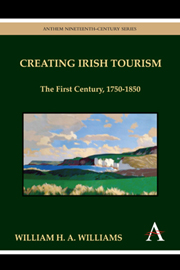Chapter 2 - Tours Grand and Petite
from Part I
Published online by Cambridge University Press: 05 March 2012
Summary
Dublin—In the Shadow of the Grand Tradition
Although Ireland's principal tourist attractions were located in its picturesque countryside, once landed in Dublin, many visitors toured the capital city before setting out for the glens, mountains and lakes. In fact, many travel writers devoted considerable space to describing the Empire's “second city,” partly because of genuine interest in Dublin and partly in response to the touring habits established by the urban-centered Grand Tour, to which Georgian Dublin itself owed much of its character. Like their English counterparts, Anglo-Irish grandees returned from their Italian tours with paintings, statues, architectural designs and sketches to be incorporated into their townhouses and country estates. Many of Dublin's buildings, public and private, reflected what one observer, referring to the new Parliament building, called “the true Italian taste.” Working with architect Sir William Chambers, Lord Charlemont drew upon his experiences in Italy to design his Palladian mansion on Rutland Square (today's Hugh Lane Gallery of Modern Art) and his exquisite miniature hideaway, the Casino, on his Marino estate overlooking Dublin Bay. C. T. Bowden described it as “one of the most beautiful and elegant seats in the world.”
By the middle of the eighteenth century the capital was already on its way to becoming a great Georgian city. Land on both sides of the River Liffey had been reclaimed and the river channeled along the city's quays.
- Type
- Chapter
- Information
- Creating Irish TourismThe First Century, 1750–1850, pp. 27 - 48Publisher: Anthem PressPrint publication year: 2010



